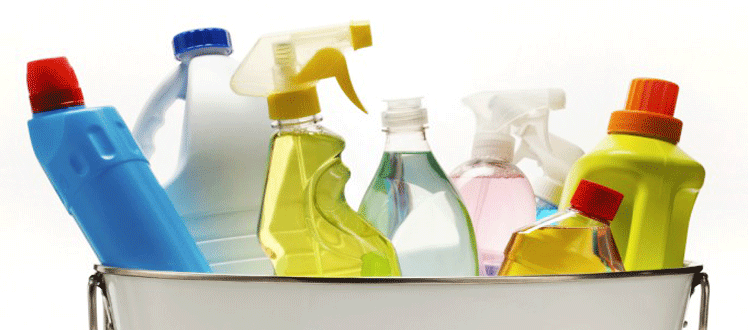Another great step towards full disclosure: SC Johnson announces disclosure of 368 allergens in cleaning products
 |
|
Alex Scranton |
S.C. Johnson (makers of Windex, Glade etc.) has announced their next move on their path towards 100% transparency of the ingredients in their products – disclosure of skin allergens that may occur in their products. The skin allergens on the company’s list can now be found online, with further product-specific disclosure being rolled out by 2018. This is an important step for public health, because as allergy sufferers know first hand, complete avoidance of allergens is often the only way to effectively prevent itching, rashes and other symptoms. And you can only avoid an allergen in a product if the manufacturer tells you it is there.
How is this move new and different?
We have lauded several other companies including RB and Clorox in recent years for their efforts to disclose to disclose fragrance allergens in their products. For those companies, they chose to voluntarily disclose the presence of 26 specific fragrance allergens in their products in the U.S. These 26 fragrance allergens are required by law to be disclosed on cosmetics and cleaning products sold in the European Union (EU), so these companies chose to provide the same beneficial information to their American customers as they already were providing to their European customers. But we know that the 26 EU allergens are just a small portion of a much larger list of consumer product chemicals which can cause allergies. There just happen to be 26 specific allergens that were written into the law in the EU, which set a precedent for disclosure. So while the 26 chemicals are a great start, to truly protect public health, people with allergies need to know about the presence of a lot more chemicals than just the 26.
S.C. Johnson has taken up this challenge.
As one of the first mainstream companies to disclose fragrance ingredients on a product-specific basis, they are now going beyond simply disclosing the 26 EU allergens to disclose a list of 368 allergens. S.C. Johnson examined available science to assess what other chemicals they were using could be linked to allergic reactions. Through an as-of-yet-undisclosed evaluation process S.C. Johnson identified not 26, but 368 potential allergens that are present in their products. The vast majority of the 368 allergens are fragrance components, but the list includes some additional chemicals such as preservatives and insecticides. S.C. Johnson will be disclosing the presence of any of these 368 allergens in their products whenever they are present at a level of at least .01% of the product. Disclosing low levels of skin allergens is important, because allergic reactions can be triggered even at these levels.
This disclosure is a victory for public health, and will provide needed information to help people prevent unnecessary adverse reactions to the products they use everyday. Women have led the effort to urge major cleaning product manufacturers to provide ingredient disclosure. Once again, S.C. Johnson has responded to the consumer demand by leading their industry further towards the goal of 100% ingredient transparency that is needed to improve public health. We hope that other manufacturers of consumer products will follow their lead in the near future.
A Timeline of Cleaning Products and Ingredient Disclosure:
(click image to enlarge)
2007: WVE releases Household Hazards, the first report to expose undisclosed toxic chemicals in retail cleaning products.
2009: SC Johnson & Son announce they will disclose ingredients, including dyes and preservatives but not fragrance.
2009: Method begins disclosing ingredients in products, except for fragrance.
2010: Clorox launches a new website listing product ingredients, except for fragrance.
2010: Procter and Gamble begins to disclose ingredients online, except for fragrance.
2010: International Fragrance Association (IFRA) releases master list of 3,000 + fragrance chemicals
January 2010: Consumer Product Specialty Association (CSPA) releases a voluntary Ingredient Communication initiative
2011: Consumer Product Specialty Association enhances the Ingredient Communication Initiative and recommends companies link to IFRA’s master list of fragrance ingredients or create their own fragrance palette, and disclose dyes and preservatives.
2011: Clorox releases a master list of fragrance ingredients.
2012: SC Johnson releases fragrance palette.
2012: Procter and Gamble releases fragrance palette.
2012: Simple Green releases fragrance palette.
2012: The American Cleaning Institute, a trade association that represents cleaning product companies, launched an inventory of ingredients used by their member companies. The list includes only limited information on fragrance ingredients, as most companies are not disclosing the chemicals they use in fragrances
2013: Reckitt Benckiser (RB) announce they will disclose product-specific fragrance allergens in cleaning products, starting with the air care line Air Wick. 2013: WVE launches No Secrets Business Partners project with several cleaning product manufacturers committed to full ingredient disclosure, including all fragrance ingredients.
2014: Clorox announces they will begin to disclose product-specific fragrance allergens in cleaning and disinfectant products.
2014: SC Johnson & Son release a statement announcing they will disclose product-specific fragrance ingredients down to .09% or the top ten ingredients in fragrance.
2015: WVE releases the report: Deep Clean.
2016: SC Johnson releases Glade line of 3 products offering 100% fragrance disclosure.
2017: SC Johnson discloses list of 368 potential skin allergens (down to .01%, with product-specific disclosure by 2018).




